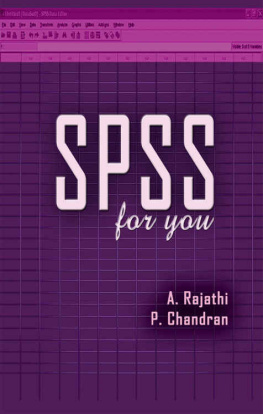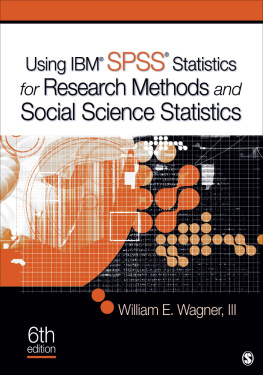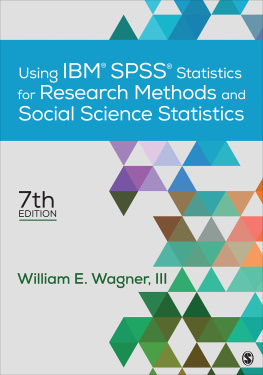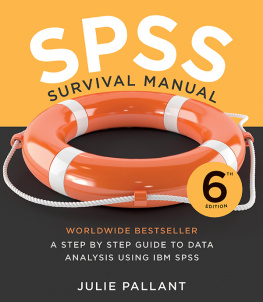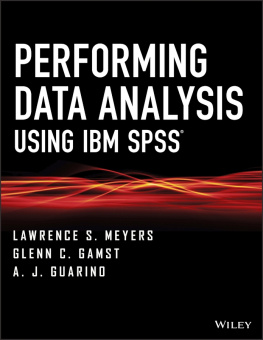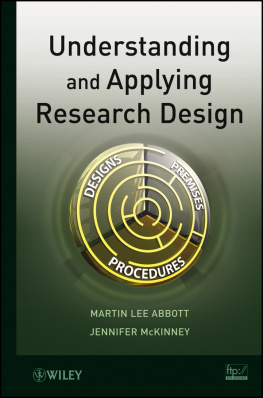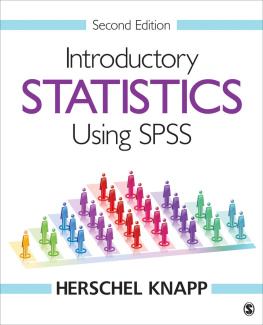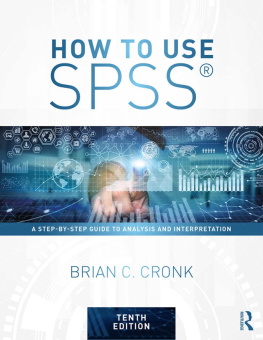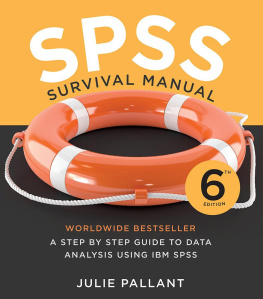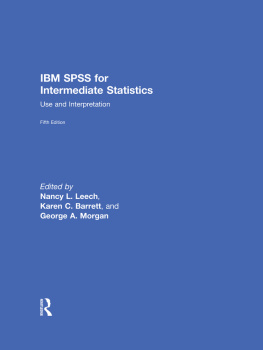
A. Rajathi
Associate Professor in Zoology
Holy Cross College
Thiruchirappalli, Tamil Nadu
P. Chandran
Professor
Center for Population Studies
Annamalai University
Chidambaram, Tamil Nadu

ISBN: 978-81-8094-108-5
All rights reserved
Copyright MJP Publishers, 2006
Publisher : C. Janarthanan
MJP Publishers
5 Muthu Kalathy Street,
Triplicane,
Chennai 600 005
Tamilnadu India
Branches: New Delhi, Tirunelveli
This book has been published in good faith that the work of the author is original. All efforts have been taken to make the material error-free. However, the author and publisher disclaim responsibility for any inadvertent errors.
PREFACE
Statistics has its applications in diversified fields and it is rather impossible to see any field where statistics does not creep in. Owing to the importance of statistics, this subject has become a part of the general curriculum of many academic and professional courses.In olden days, researchers spent months in completing a statistical task manually.With the advent of computers, a few programs were made available to analyse statistical data. SPSS,earlier termed as Statistical Package for the Social Sciences, is one of the oldest statistical programs on the market, which was originally written for mainframe computers and designed to be used in the social sciences, hence the name.Nowadays, this package is used by researchers from every discipline as the software contains powerful tools for automated analysis of data.
Our experience of more than two and a half decades of teaching SPSS from the earlier version to the latest version, our practical experience in guiding researchers in their statistical analyses and our experience in conducting courses in SPSS in various institutions gave us the interest and confidence to write this self-study book on SPSS.
The scope of this book is to introduce the reader to the SPSS for Windows and to enable them enter and format data, run the analysis, draw different kinds of diagrams and graphs and interpret data.This book is prepared for use in the teaching of statistics in colleges and for those who work independently in research, for analysis and interpretation of data.
This book is written in a simple systematic way. The subject matter is arranged in chapters and sections, numbered by the conventional decimal numbering system. All chapters have been written like a tutorial. Each chapter has instructions that guide the learner through a series of exercises, as well as graphics showing how the screen should look like at various steps in the process.
This book has nine chapters. Chapter 1 gives a brief account of statistical data, sample and population and the basics of hypothesis testing.The rest of the chapters contain chapter-specific materials with exercises.Chapter 4 exclusively deals with a versatile way of producing graphs such as clustered bar chart with error bars with the aid of Chart builder and Interactive graphs. Chapters on comparing averages, analysis of variance, correlation, regression and chi-square are written in a very simple way with specific examples, to enable the reader to understand the concept and carry out the analysis easily, and interpret the results.
Throughout the book,we have used screen snapshots of SPSS Data Editor with Variable view and Data view, Dialog boxes and Outputs to illustrate finer aspects of the technique.The revision exercises are chapter-specific to enable the novice to have a personal hands-on training. We have also included a glossary for easy reference.
We would like to thank the faculty and the research scholars who approached us to have some clarification on the choice of the statistical test, running the analysis and interpreting data.
We are grateful to the authors of various books on SPSS which we have referred towhile writing this book, especially Andy Field who has authored Discovering Statistics using SPSS , for the topics on Matched-Pairs Signed Rank test and MannWhitneys test.
We are grateful to Prof. P. Shanmugavadivel, Department of Statististics, St. Josephs College,Tiruchirapalli, India, for his spontaneous help and for his valuable comments. Finally,we would like to thank Mr. C. Sajeesh Kumar, Managing Editor, MJP Publishers, Chennai,for scrutinizing the manuscript with perfection, and for his valuable suggestions.
We hope that this book will be of great help to the readers in carrying out analysis with SPSS. If you would like to make suggestions, correct errors, or give us feedback, you are most welcome.Please send your suggestions and criticisms to c_rajathi@yahoo.com,to enable us to improve the contents in the next editions.
A. Rajathi
P. Chandran
INTRODUCTION
A scientist, an engineer, an economist or a physician is interested in discovering about a phenomenon that he assumes or believes to exist. Whatever phenomenon he desires to explain, he tries to explain it by collecting data from the real world and then using these data he draws conclusions. The available data are analysed by him with the help of statistical tools by building statistical models of the phenomenon. This chapter gives a brief overview of some important statistical concepts and tools that help us to analyze the data to answer scientific questions.
POPULATION AND SAMPLE
Biologists might be interested in finding the effect of a certain drug on rat metabolism; psychologist might want to discover processes that occur in all human beings, an economist might want to build a model that apply to all salary groups and so on. In all these situations, it is impossible to study the entire unit on which the researcher is interested. Instead he studies only a handful of observations and based on this he draws conclusion for the entire unit on which he was originally interested. In this connection two terms are often used in statistical investigation, one is population and the other is sample. The term population refers to all possible observations that can be made on a specific characteristic. In the first example of the biologist, the term population could mean all the rats now living and all rats yet to be born or it could mean all rats of a certain species now living in a specific area. A biologist cannot collect data from every rat and the psychologist cannot collect data from every human being. Therefore, he collects data from a small subset of the population known as sample and use these data to infer on the population as a whole.
If engineers want to build a dam, they cannot make a full-size model of the dam they want to build; instead they build a small-scale model and tests this model under various conditions. These engineers infer how the full-sized bridge will respond from the results of the small-scale model. Therefore, in real life situations we never have access to the entire population so we collect smaller samples and use the characteristics of the sample to infer the characteristics of the population. The larger the sample, the more likely it is to represent the whole population. It is essential that a sample should be representative of the population from which it is drawn.
OBSERVATIONS AND VARIABLES
In statistics, we observe or measure characteristics called variables. The study subjects are called observational units. For example, if the investigator is interested in studying systolic and diastolic blood pressure among 100 college students, the systolic and diastolic blood pressures are the variables, the blood pressure readings are the observations and the students are the observational units. If the investigator records the students age, height and weight in addition to systolic and diastolic blood pressure readings, then he has a data set of 100 students with observations recorded on each of five variables (systolic pressure, diastolic pressure, age, height and weight) for each student or observation unit.
Next page
